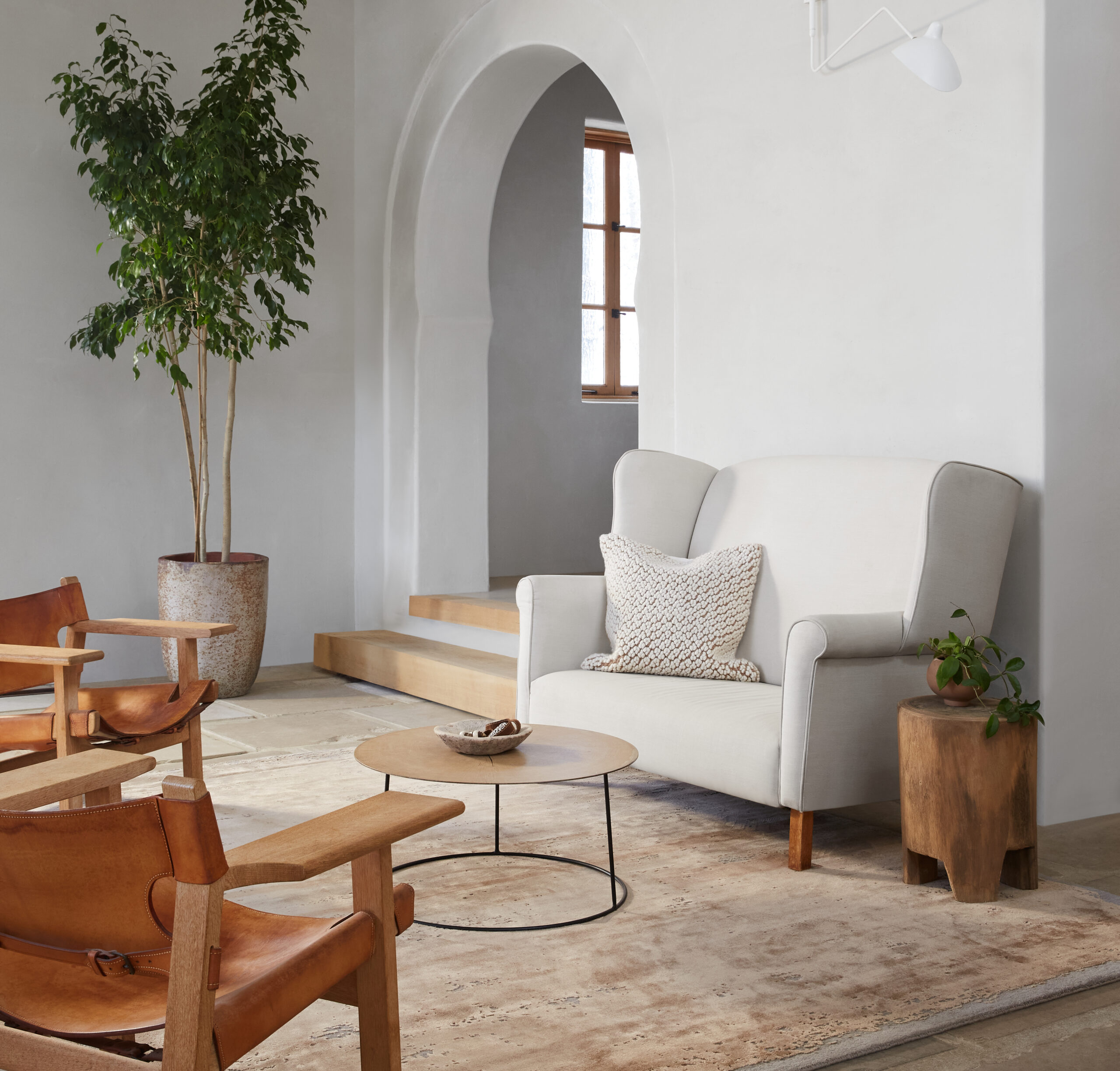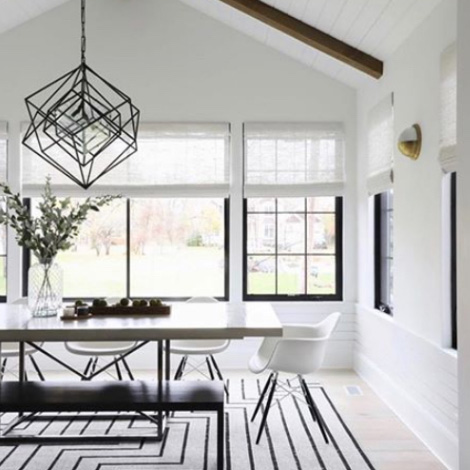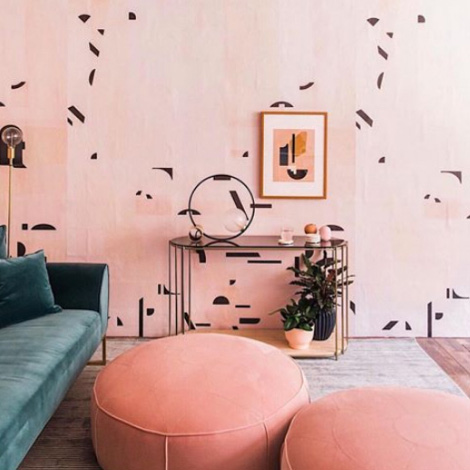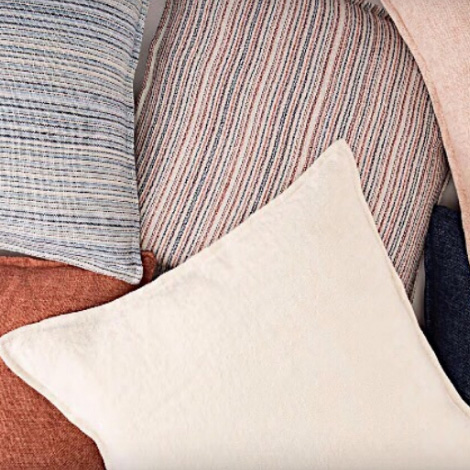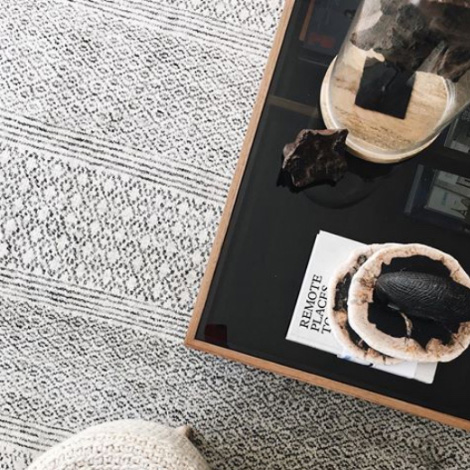Who better too forecast the future of the design than those building the industry’s future? Jaipur Living spoke with four Ohio State University students about the trends and changes they foresee in interior design.
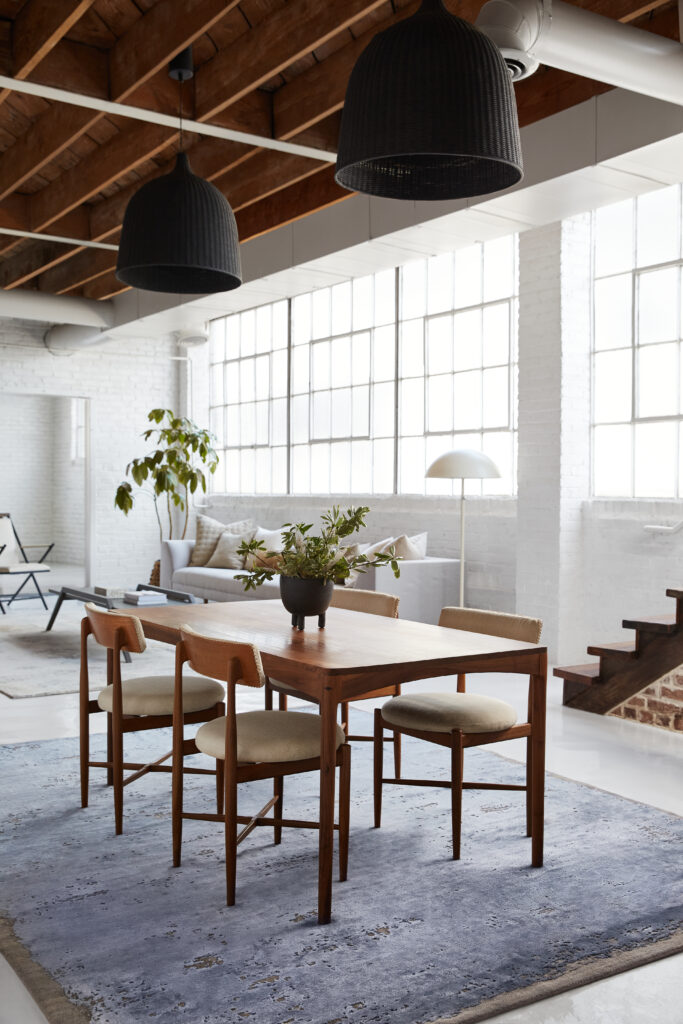
The Urban Pause collection is available exclusively to interior designers through the Designer Edit program.
Nuance
Forecasted by Morgan Vereb
“Nuance, first and foremost, is a celebration of authentic storytelling,” says Morgan Vereb. “It’s about discovering identity that comes from the subtle qualities that make something unique and reveling in so-called ‘imperfections.’”
The future of design, Vereb says, will see a shift from mass-production and conformity to “a celebration of individuality,” particularly post-pandemic, as “people want to rediscover meaning and humanity in their day-to-day lives,” she says. “Nuance is the opposite of hustle culture; it honors slow living and taking the time to recognize and appreciate the intrinsic beauty of life around us.” For Vereb, nuance at its core is “a reveal a subtle expression of the soul.”
See also: 5 Inspirational Minutes With N.K. Chaudhary
When it comes to interior design, Vereb sees this manifesting as an increasing desire for “character” (think exposed brick or cement walls), as well as a greater need to understand where products come from and the unique story behind them—whether that’s consumers’ personal relationships with brands and vendors or “the handcrafted, unique look of a one-of-a-kind item,” she notes. Nuance also points to a trend of using “home” as a means of self-expression and individuality, “rather than a showroom of what a house should look like,” Vereb says.

Handmade by artisans Anju and Sushila, this Manchaha rug is named Udti Patang, meaning ‘flying kite.’
Nuance in Rugs
Manchaha “Manchaha embodies the essence of nuance, with its detailed artisan quality and emphasis on storytelling. Even the meaning of the word itself, ‘Expression of the heart,’ acknowledges the value and beauty of individuality.”
Vintage rugs “These one-of-a-kind pieces reflect traditional styles and practices and carry significant cultural context in their design.”
Urban Pause by Kavi “Thematically, the concept behind this collection is about creating a tranquil moment of pause in a fast-paced society with nods to natural processes.”
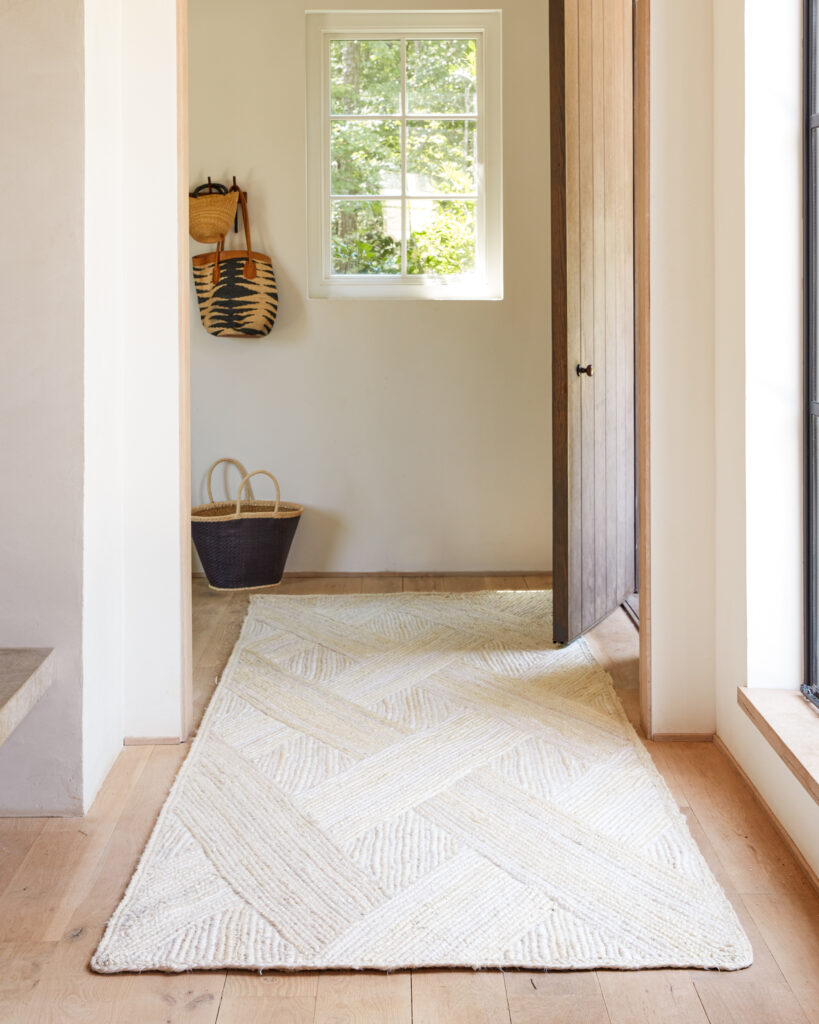
The bestselling Naturals Tobago collection is handcrafted from 100% jute.
Green Energy
Forecasted by Ben Chamberlin
“In the very near future, we will have the opportunity to be proactive in our mission for 100% clean energy and become self-powered,” says Ben Chamberlin. “My trend prediction involves product lifecycle sustainability with a specific focus on end-of-life for renewable green energy. It is estimated that the amount of solar energy reaching the Earth’s surface is greater than the sum of all energy we could ever produce using nonrenewable resources. Currently, American solar power offsets over 70 million metric tons of carbon dioxide yearly, which is like planting almost 1.2 billion trees.”
See also: The Interior Designer’s Guide To Sustainability
With the population only increasingly spending time in front of screens and—particularly since the pandemic—often working from home, “green energy will have a more active and flexible role in the design industry,” says Chamberlin. “Mobile human lives and constant motion will be at the forefront of renewable design.”
Case in point: Solar cells have already been integrated into products such as backpacks and clothing. “There are textiles being developed that will be capable of converting solar power and mechanical power into electricity themselves,” Chamberlain says. “The next step is globalizing this technology in support of cleaner energy.”
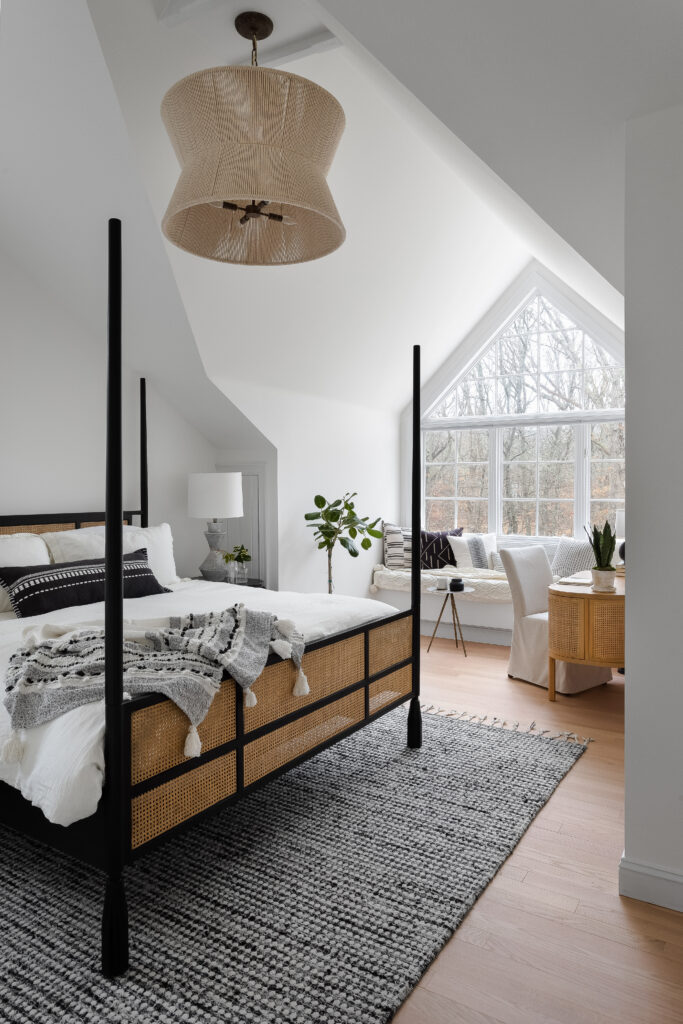
Designed by Wirth Design Group, the Tamil rug, which is made of sari silk, is at the center of this bedroom. Photo by Steven Bruno
Green Energy in Rugs
Tamil “The Tamil collection uses surplus materials from other rugs and utilizes recycled strips of fabric from traditional silk saris.”
Manchaha “The Manchaha collection is crafted from leftover yarn from completed rugs. This is a great solution to reducing the amount of product waste generated, leading to a cleaner future.”
Naturals Tobago “The Naturals Tobago collection is made from 100% jute, which means it is renewable and completely biodegradable. This collection is a great example of complete product lifecycle sustainability.”
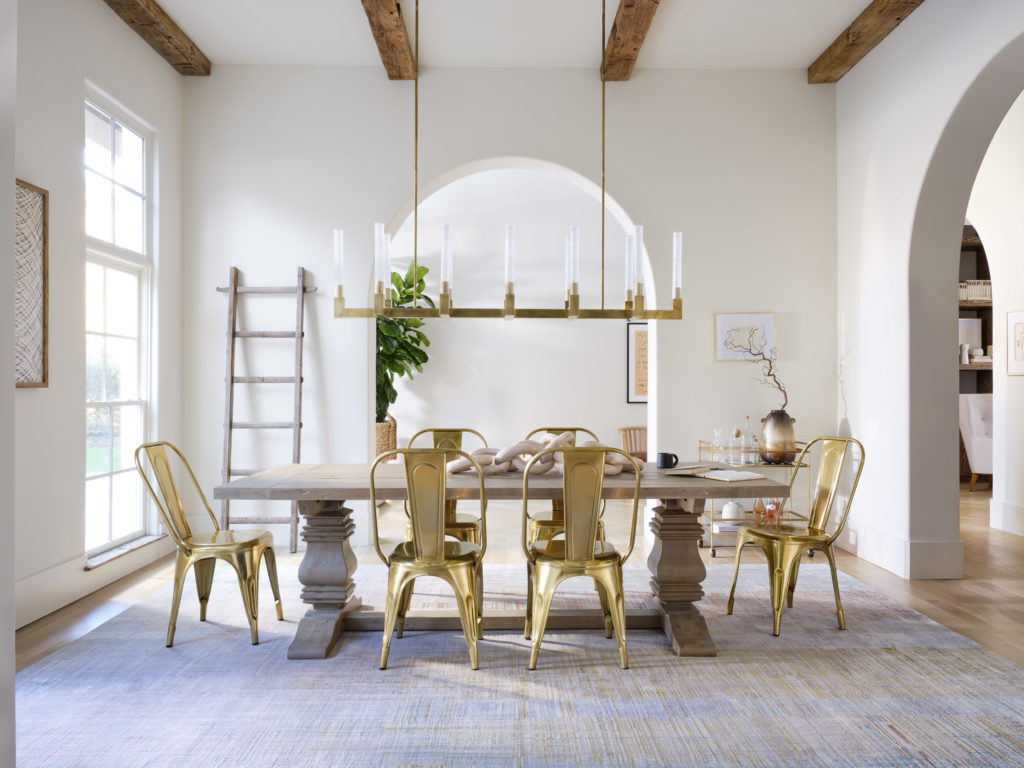
The Unstring collection by Kavi was winner of the Carpet Design Award for Best Modern Collection at Domotex.
Activism Through Expression
Forecasted by Fabian Perez
“During my time of research, the world was seeing injustices come to surface on a weekly basis—racial inequality, global warming, carbon footprints, LGBTQ+ topics,” says Fabian Perez. “What was particular in this time, though, was the way GenZers took on these battles. We’ve seen demonstrations of communities using their voices in unique and expressive ways to fight for societal changes… music, art, photography, fashion, and lifestyles have given Gen Z an outing to express the emotions towards these injustices.”
See also: The Voice Of The Up-And-Coming Designer
In the world of design, this comes to fruition through “works of color blocking, minimalism, binary clothing, and movements,” says Perez. Think bold graphics and pattern, unisex clothing, and sustainable production efforts. “I believe the industry has taken the lead on sustainable efforts in product design, the way materials are shipped, and others issues like diversity, equity, and inclusion.”
Activism Through Expression in Rugs
Unstring by Kavi “Unstring by Kavi caught my eye for its vibrancy in color in addition to the colorblocking.”
Jaipur Wunderkammer “This collection brings bold details and Indian culture through architecture, paintings, and motifs.”
Nazka “This pillow embodies natural earth tones of colors of tan and orange. Tribal-inspired elements add a sense of culture.”
The Jaipur Wunderkammer rug from Matteo Cibic is the focal point of this Iconic Design + Build space. Photography by Kevin Brost
4. Slow Fashion
Forecasted by Madison Hildebrand
“My trend prediction is the increase of second-hand fashion to put a stop to fast fashion,” says Madison Hildebrand. Purchasing upcycled or second-hand products, including furnishings and home decor, is not only more economical, but it also reduces environmental impact. “Just behind the oil industry, the fashion industry is the second largest polluter in the world,” Hildebrand says. “I think this is something that is becoming more awakening for people of our generation. … For the future of fashion, design, and everything else in the same category, we need to take sustainability seriously.”
In the interior design world, “furniture flipping”—repurposing used furniture—is already bringing this trend to life, says Hildebrand. Reusing materials, as well as producing and consuming less, is a growing trend with both consumers and brands. “One of the bigger ways this is being introduced is with companies like Fabscrap, an independent textile waste company that collects unwanted or unneeded textiles and either resells them or sends them to be transformed into fill for carpet padding or other industry materials, creating a zero-waste process,” she says.
Slow Fashion in Rugs
Handmade rugs “This ensures they aren’t mass produced and are sourced and created ethically.”
Vintage rugs “With an increase in companies that help reduce waste, we will make progress in our impact on the environment.”
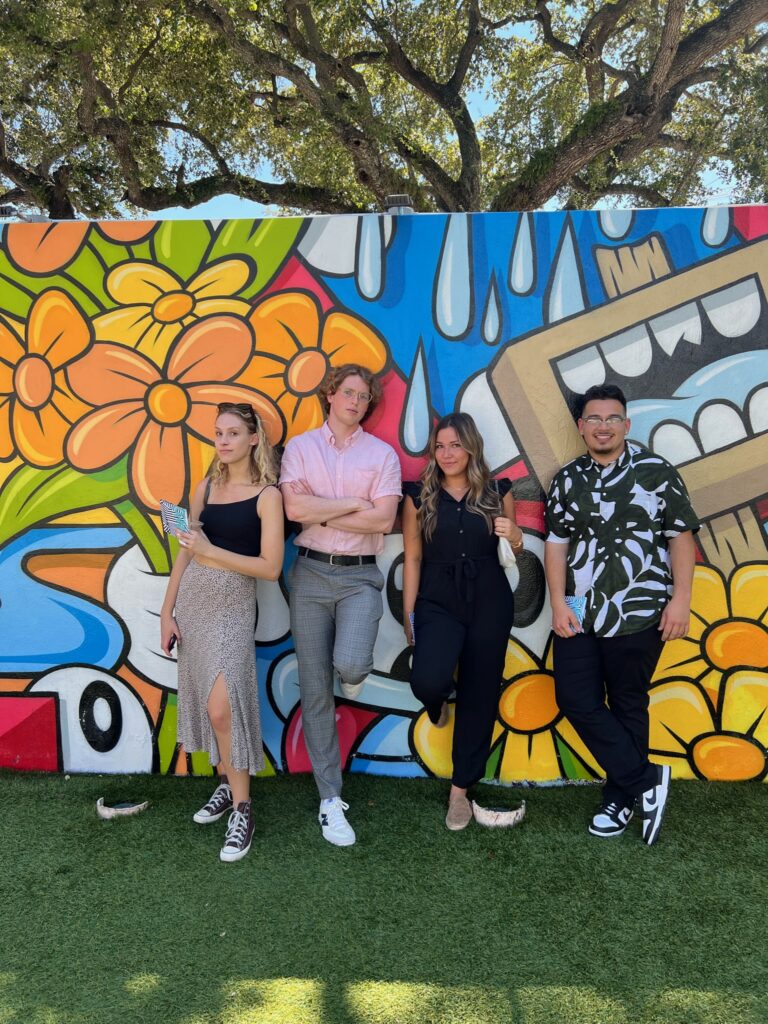
The Ohio State University students profiled in this article at the ASID national conference


